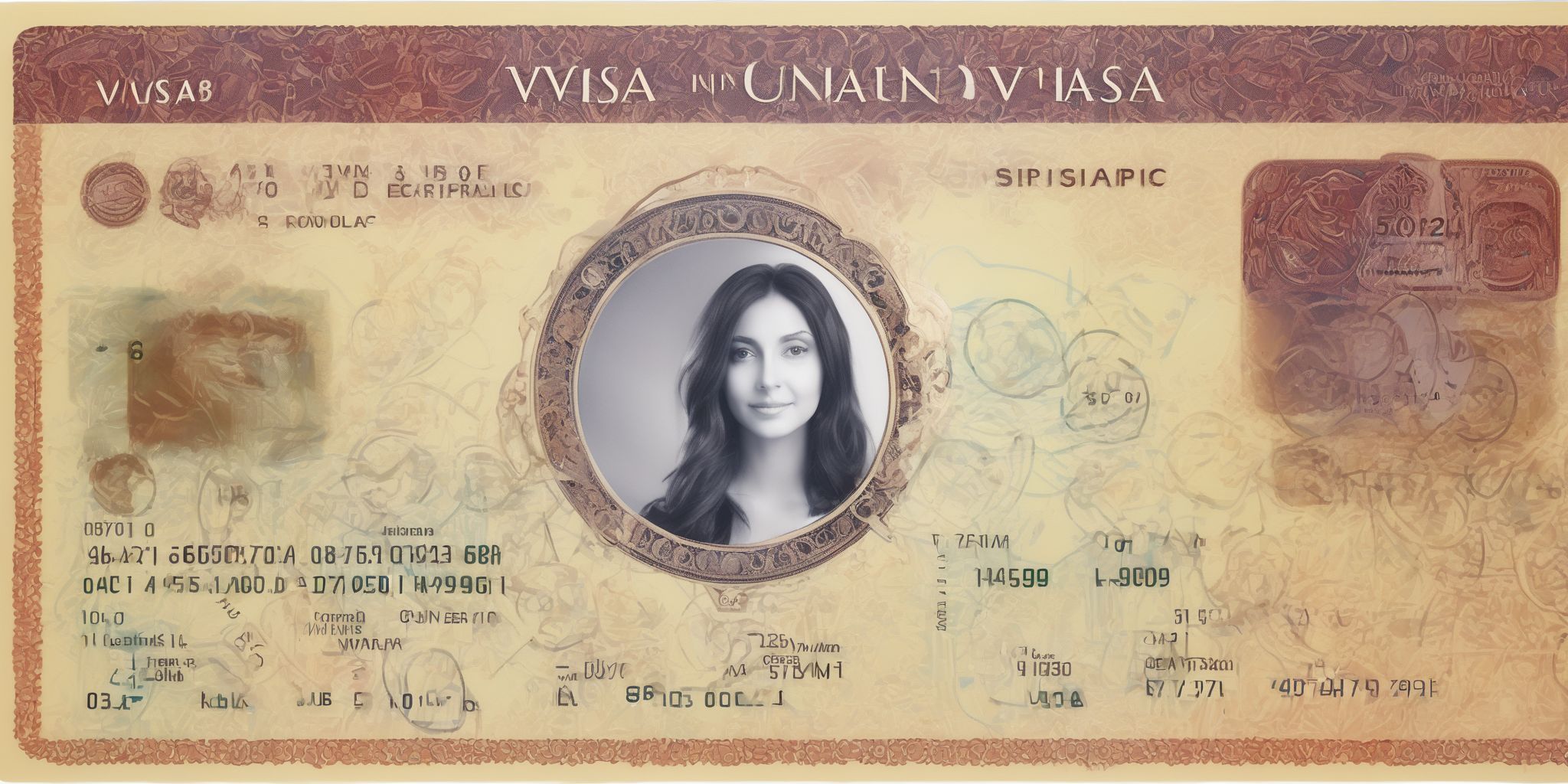Unraveling the Mechanics of Foreign Exchange Swaps: A Deep Dive into an Essential Financial Instrument
Foreign exchange swaps—an essential financial instrument that lies at the heart of global forex markets—may seem complex and mysterious to many. Yet, these sophisticated arrangements play a pivotal role in facilitating international trade, investment, and currency risk management. So, let's roll up our sleeves and embark on a deep dive into the mechanics of foreign exchange swaps, unraveling the intricacies that make this vital tool tick.
Brace yourself for a journey into the fascinating world where currencies collide, and fortunes are made or lost.
What is a Foreign Exchange Swap?
A Foreign Exchange Swap is a financial instrument used to exchange one currency for another at a predetermined rate on one date and then reverse the exchange at a later date, typically at a different rate. It consists of two transactions: a spot transaction and a forward transaction.
For example, if a company needs to convert US dollars into euros now, but wants to convert back to dollars in the future, they can enter into a foreign exchange swap. This allows them to secure a fixed exchange rate and hedge against potential currency fluctuations.
Foreign Exchange Swaps provide a way to manage currency risk and facilitate international trade and investment. They are commonly used by multinational corporations, financial institutions, and central banks to address currency mismatches and achieve their desired exposure.
Importance of Foreign Exchange Swaps in the Financial Markets
Foreign exchange swaps play a significant role in the financial markets. They provide a mechanism for market participants to manage currency risk and optimize liquidity. For multinational corporations, foreign exchange swaps enable hedging against unfavorable currency fluctuations during international transactions, reducing potential losses. Financial institutions also rely on these swaps to obtain desired currency exposures and facilitate smooth transactions for their clients.
Moreover, speculators can take advantage of foreign exchange swaps to capitalize on anticipated currency movements. The importance of foreign exchange swaps lies in their ability to enhance market efficiency, mitigate risk, and support global commerce.
Understanding the Mechanics of Foreign Exchange Swaps
Definition and Components of a Foreign Exchange Swap
A foreign exchange swap is a financial instrument that involves exchanging one currency for another at a predetermined exchange rate on a specific date, with an agreement to reverse the transaction at a future date. This allows businesses and investors to manage their exposure to currency fluctuations. The components of a foreign exchange swap include the spot exchange rate, forward exchange rate, swap points, notional amount, interest rate differential, and maturity date.
For example, a company may enter into a foreign exchange swap to convert its USD proceeds from a foreign sale into euros at a favorable exchange rate for immediate use in its European operations.
Spot Exchange Rate
The spot exchange rate is a fundamental component of a foreign exchange swap. It represents the current market rate at which one currency can be exchanged for another. Here are some key points to understand about spot exchange rates in the context of foreign exchange swaps:
- The spot rate reflects the supply and demand dynamics in the foreign exchange market.
- It serves as a reference point for calculating the forward exchange rate and swap points.
- Traders and investors monitor spot rates to identify opportunities for arbitrage or speculation.
- Fluctuations in the spot rate impact the pricing and profitability of foreign exchange swap transactions.
- Market participants use spot rates to assess the value and risk associated with their currency holdings.
Understanding the spot exchange rate is crucial for effectively navigating and executing foreign exchange swap transactions.
Forward Exchange Rate
- The forward exchange rate is a crucial component of a foreign exchange swap.
- It represents the agreed-upon exchange rate at which two parties will exchange currencies at a future date.
- The forward rate is determined by factors such as interest rate differentials, market expectations, and supply and demand dynamics.
- It enables market participants to hedge against potential currency fluctuations and manage their exposure to foreign exchange risk.
- Example: In a foreign exchange swap, a company can enter into a contract to exchange a fixed amount of one currency for another currency at a future date, using the forward exchange rate to determine the conversion rate.
- By understanding and monitoring forward exchange rates, market participants can make informed decisions about their currency exchange transactions and mitigate potential risks.
Swap Points
Swap points are an integral component of foreign exchange swaps. They represent the difference between the spot exchange rate and the forward exchange rate. Swap points are influenced by interest rate differentials between the two currencies involved in the swap and are used to calculate the cost or benefit of exchanging one currency for another at an agreed future date. Understanding swap points is crucial for effectively managing currency risk and determining the cost of hedging positions.
For example, if a company wants to hedge against potential currency fluctuations, they can use swap points to determine the cost of entering into a foreign exchange swap. By considering swap points, companies can make informed decisions about when and how to execute their foreign exchange swap transactions.
Notional Amount
Foreign Exchange Swap - Notional Amount:
- The notional amount in a foreign exchange swap refers to the principal value or the initial amount exchanged between parties.
- It represents the quantity of one currency that will be exchanged for another at the onset of the contract.
- The notional amount determines the size of the swap and influences the cash flows involved in the transaction.
- It can vary based on the specific needs of the parties involved, allowing for flexibility in hedging or speculating on currency movements.
- For instance, in a foreign exchange swap with a notional amount of $1 million, one party may exchange $1 million for an equivalent amount in a different currency.
- The notional amount serves as the foundation for calculating interest payments and determines the potential gains or losses in the swap.
Interest Rate Differential
Interest rate differentials play a significant role in foreign exchange swaps. They reflect the disparity in interest rates between two currencies involved in the swap. When entering a swap, parties consider the potential advantage or disadvantage from the difference in interest rates. If one currency offers a higher interest rate than the other, a trader may choose to receive that higher rate. This can be beneficial for obtaining cheaper funding or maximizing investment returns.
Conversely, ifthe interest rate differential is unfavorable, it may deter participants from engaging in the swap. By monitoring and analyzing interest rate differentials, traders can identify potential opportunities or risks in foreign exchange swaps.
Maturity Date
The Maturity Date in a Foreign Exchange Swap refers to the agreed-upon date when the initial exchange of currencies will occur, completing the swap. This date is determined at the outset of the transaction and is crucial for both parties involved. It allows them to synchronize their currency exchange and align with their respective cash flow requirements.
For example, if a company has a contractual payment due in a foreign currency in six months, they can enter into a six-month swap to hedge against exchange rate fluctuations. The maturity date ensures that the swap aligns with their specific needs, providing certainty and reducing risk in currency conversions.
Settlement and Execution
Foreign exchange swap settlement and execution are crucial components of the overall process. Once the terms of the swap have been agreed upon, the actual exchange of currencies takes place. This is typically done through a spot foreign exchange transaction, where the parties involved exchange the agreed-upon notional amounts at the prevailing spot exchange rate. The settlement can occur either physically or on a cash basis, depending on the agreement.
During the execution, it is important to ensure timely and accurate transaction processing to minimize any potential risks or errors. Proper execution ensures that the participants receive the appropriate currencies at the agreed-upon rates and dates, enabling them to fulfill their respective obligations.
Benefits and Uses of Foreign Exchange Swaps
Hedging Currency Risk
Foreign exchange swaps serve as an effective tool for hedging currency risk. By entering into a swap agreement, companies can mitigate potential losses caused by fluctuations in exchange rates.
For example, a company with significant international operations can use a foreign exchange swap to lock in a favorable exchange rate for future transactions, protecting itself against adverse movements. This allows businesses to better forecast and manage their cash flows, minimizing the uncertainty and potential financial impact of currency fluctuations. Foreign exchange swaps provide a practical solution for businesses to hedge their exposure to currency risk and maintain stability in international trading operations.
Managing Liquidity
- Foreign exchange swaps play a crucial role in managing liquidity for financial institutions.
- By utilizing foreign exchange swaps, institutions can effectively balance their currency positions and meet their short-term funding needs.
- For example, if a bank has excess liquidity in one currency but needs funds in another, it can enter into a foreign exchange swap to convert the excess currency into the needed currency.
- This allows institutions to optimize their cash flows, maintain financial stability, and avoid potential funding challenges.
- Additionally, foreign exchange swaps enable institutions to access alternate sources of funding and diversify their funding channels, reducing reliance on any single source of liquidity.
Speculative Trading Opportunities
- Foreign exchange swaps provide potential opportunities for speculative trading in the currency markets.
- Traders can take advantage of interest rate differentials between two currencies by entering into a foreign exchange swap.
- By borrowing in a low-interest-rate currency and using the funds to invest in a higher-yielding currency, traders can aim to profit from the interest rate differential.
- Speculative trading using foreign exchange swaps requires careful analysis and understanding of market conditions and interest rate movements.
- Traders should consider factors such as economic indicators, central bank policies, and geopolitical events to identify potential trading opportunities.
- Successful speculative trading in foreign exchange swaps can lead to profitable outcomes, but it also carries inherent risks and requires expertise in currency markets.
Role of Financial Institutions in Foreign Exchange Swaps
Banks and Market Makers
Banks and market makers play a significant role in the foreign exchange swap market. They act as intermediaries, facilitating transactions between counterparties. Banks provide liquidity and access to a wide range of currencies, enabling participants to execute their desired swap trades. Market makers help maintain orderly markets by offering competitive bid and ask prices. Their presence ensures efficient pricing and execution of foreign exchange swaps.
Additionally, banks offer advisory services to clients, assisting them in managing currency risks and optimizing their swap portfolios. The expertise and infrastructure of banks and market makers enhance the accessibility and functionality of foreign exchange swaps for market participants.
Clearing Houses and Central Counterparties
Clearing houses and central counterparties play a central role in the foreign exchange swap market. They act as intermediaries that facilitate the clearing and settlement of trades between parties. By assuming the counterparty risk, they provide a crucial layer of protection to market participants. Clearing houses use standardized processes and procedures to ensure transparency, efficiency, and risk mitigation. They also enforce margin requirements and collateral management to minimize risks.
Central counterparties enhance market liquidity and reduce systemic risks by centralizing trade processing. Their involvement instills confidence and promotes stability in the foreign exchange swap market.
Regulatory Oversight
Regulatory oversight is an integral aspect of foreign exchange swaps. Various regulatory bodies and authorities enforce compliance measures to ensure fair and transparent trading practices. For instance, financial regulatory agencies monitor the activities of financial institutions involved in forex swaps to prevent market manipulation and protect investors. Compliance with regulations helps maintain market integrity and reduces the risk of fraud or abuse.
Additionally, regulatory oversight promotes stability and trust in the financial system, providing market participants with a level playing field. Traders and institutions must stay updated on regulatory requirements and adapt their practices accordingly to adhere to compliance standards.
Real-Life Example of a Foreign Exchange Swap
One real-life example of a foreign exchange swap involves a multinational corporation with operations in both the United States and Europe. The company's CFO anticipates a future need to convert euros into dollars to fund expansion plans. To hedge against currency exchange risk, the company enters into a foreign exchange swap with a financial institution. The swap involves exchanging a fixed amount of euros for dollars at the current spot exchange rate and simultaneously agreeing to exchange the same amount of dollars for euros at a predetermined future date and forward exchange rate. This swap helps the company mitigate potential losses due to unfavorable exchange rate movements and provides greater financial stability to execute its expansion strategy.
Description of the Trade
- A foreign exchange swap involves the simultaneous exchange of two different currencies between two parties for a specific period.
- In this trade, Party A borrows a certain amount of currency from Party B, while Party B borrows the equivalent value in a different currency from Party A.
- The initial exchange takes place at the spot exchange rate, with the agreement to reverse the transaction at a predetermined forward exchange rate at maturity.
- The notional amounts are agreed upon, representing the principal to be exchanged.
- This trade allows entities to access a different currency without actually owning it, making it useful for managing currency exposures, funding needs, or taking advantage of interest rate differentials.
- By swapping currencies, participants can mitigate exchange rate risks and benefit from favorable market conditions.
- Foreign exchange swaps are widely used in international trade, global financing, and investment activities.
Rationale and Objectives
The rationale behind engaging in a foreign exchange swap is to mitigate currency risk and secure favorable financing rates. Companies and investors often use these swaps to convert their liabilities denominated in one currency into another currency, reducing the impact of exchange rate fluctuations. The objective is to achieve cost savings, manage cash flows efficiently, and gain access to funding in a preferred currency.
For example, a multinational corporation may enter into a foreign exchange swap to convert a loan denominated in a strong currency into a weaker currency, reducing interest expenses. This strategic decision allows them to optimize their financial position and capitalize on market opportunities.
Execution and Outcome
- The successful execution of a foreign exchange swap is crucial for achieving the desired objectives and minimizing risks.
- Timely settlement and accurate calculation of swap points are important to obtain the desired exchange rate.
- Adequate documentation, including confirmation of terms and conditions, ensures transparency and reduces disputes.
- Monitoring the progress of the swap during its duration helps manage potential risks and make necessary adjustments.
- Outcome depends on various factors, such as market conditions and interest rate differentials.
- Assessing the outcome involves comparing the realized exchange rate with the initially agreed upon rate and evaluating the overall impact on the organization's financial position.
- Continuous evaluation of executed foreign exchange swaps helps refine future strategies and improve decision-making.
Risks and Challenges Associated with Foreign Exchange Swaps
Counterparty Risk
Counterparty risk is an inherent concern when engaging in foreign exchange swaps. It refers to the potential for the counterparty to default on their obligations, leading to financial losses. In practical terms, this risk arises if the other party fails to make the agreed-upon currency exchange or honor the interest rate differentials. The impact of counterparty risk can be significant, as it may disrupt business operations and result in financial instability.
To mitigate this risk, parties canconduct thorough due diligence on potential counterparties, establish credit limits, and consider collateral agreements. Diversifying counterparties and using central clearing houses also help mitigate the risk of individual default.
Market Risk
Market Risk in Foreign Exchange Swaps:
Market risk is a significant consideration in foreign exchange swaps. Fluctuations in exchange rates can impact the overall profitability and risk exposure of the swap. For example, if a party agrees to exchange a currency at a specific rate in the future, but the exchange rate moves unfavorably, it can lead to potential losses.
To mitigate market risk, participants in foreign exchange swaps often monitor market trends, assess currency volatility, and employ hedging strategies. They may use options, futures, or other instruments to offset potential losses. It is crucial to stay informed about global economic developments, geopolitical events, and monetary policy decisions of relevant countries to anticipate market movements and manage risk effectively.
Operational Risk
Operational risk is a significant concern in foreign exchange swaps. It refers to the potential for errors or failures in the processes, systems, and controls used to execute and settle swap transactions. Such risks can lead to financial losses, reputational damage, or regulatory non-compliance. Examples of operational risks in foreign exchange swaps include trade processing errors, technological glitches, and inadequate internal controls.
Financial institutions must implement robust risk management frameworks, including thorough trade validation, reconciliation, and continuous monitoring processes. Staff training and awareness programs can also help mitigate operational risk. Regular testing and scenario planning are crucial to identify vulnerabilities and ensure a resilient operational environment in foreign exchange swaps.
Key takeaways
Foreign exchange swaps are crucial financial instruments that play a key role in the global currency market. They involve simultaneous buying and selling of two different currencies with a preset agreement to reverse the transaction at a later date. This article delves deep into the mechanics of foreign exchange swaps, unraveling the complexities behind these instruments.
Exploring the purpose, structure, and risks associated with this financial tool, it provides valuable insights for those looking to understand and navigate the world of foreign exchange swaps.


